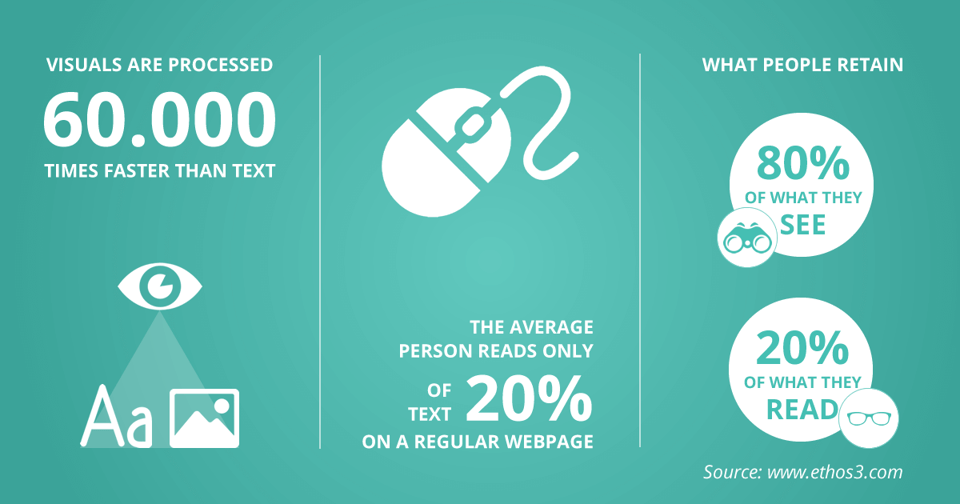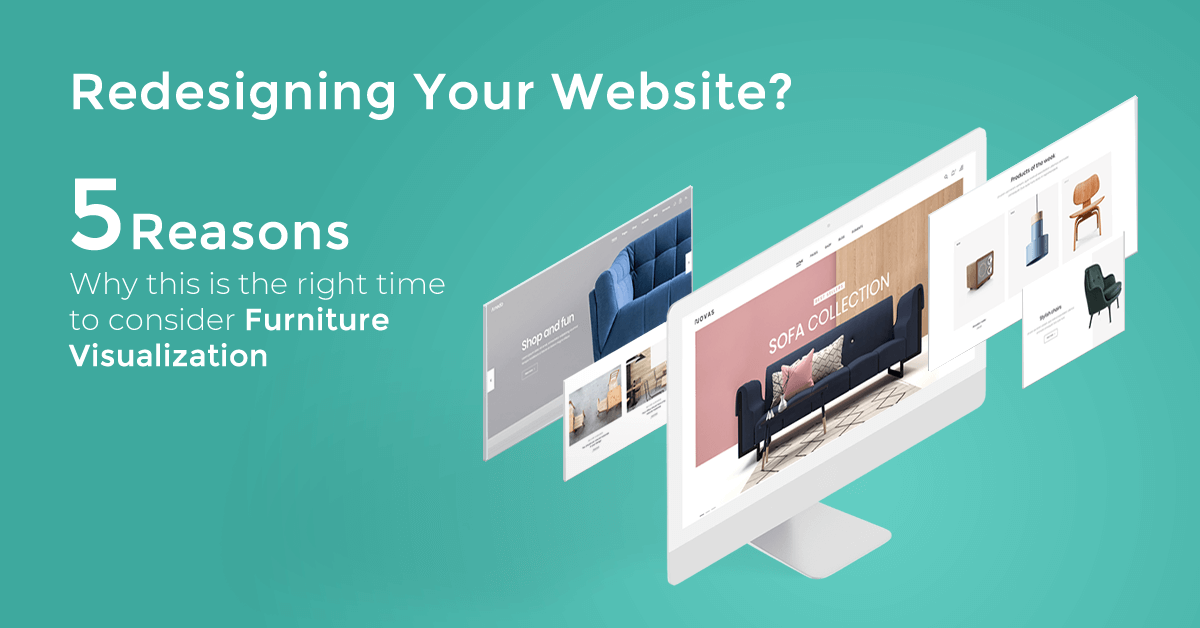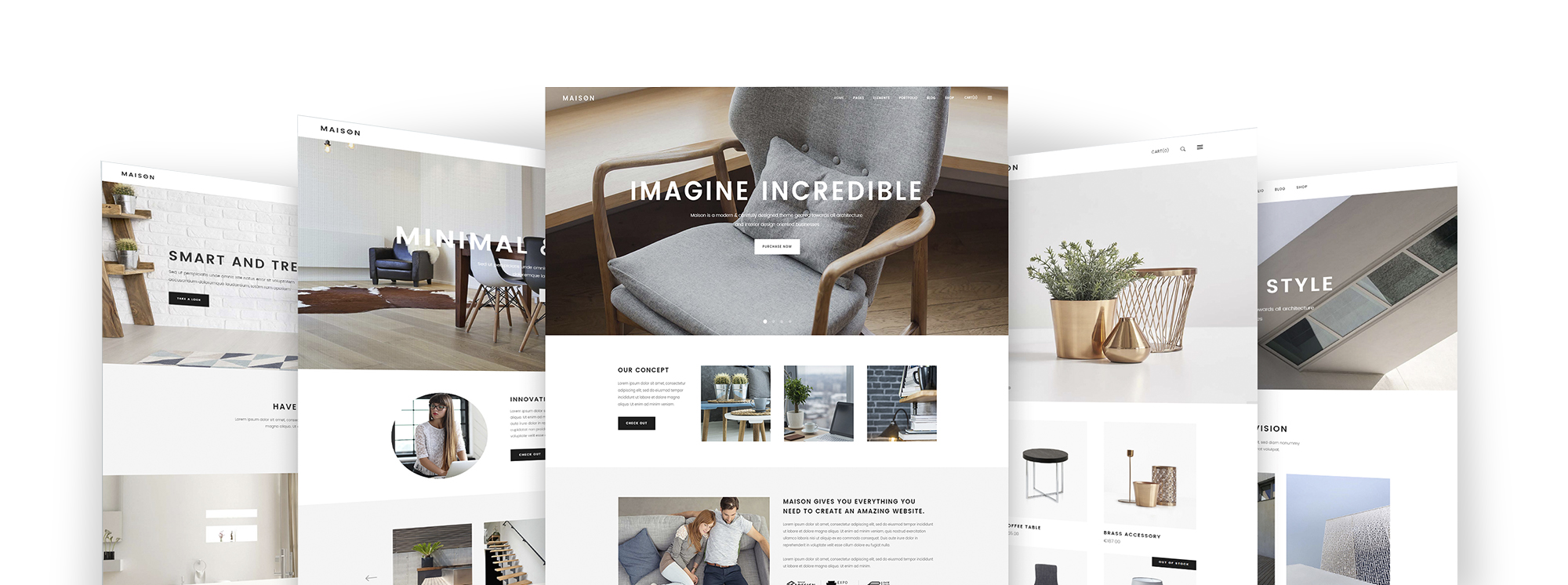At a time when e-commerce sales make up nearly one-fifth of total retail sales, with an annual growth rate of 15%, retailers can’t afford to have a lousy website.
Even traditional industries like furniture are finally waking up to the new reality - online presence matters. Today the furniture purchase journey starts online for more than 70% of consumers, and worldwide online furniture sales are expected to grow at an average annual growth rate of 11.9% between 2018 and 2022, resulting in a market volume of $294 billion in 2022.
If you are a furniture retailer, you are probably well aware of the importance of the aesthetics and functionality of your website. On the other hand, if you are a furniture manufacturer, and you think that B2B furniture sales are happening offline, you might want to reconsider that notion.
B2B e-commerce sales are accelerating, and last year they surpassed $1 trillion for the first time. According to a report from Digital Commerce 360, 75% of manufacturers, distributors, and wholesalers that don’t operate an e-commerce site plan to launch them within two years. The way things work in the B2B sphere has changed. B2B customers are becoming increasingly self-reliant, and as reported by Accenture, they are 57% through the buying process before the first meeting with a company representative. This means that online presence and digital merchandising are now crucial for manufacturers as well.
Why? It’s simple. It doesn't matter if you are a furniture brand or retailer, your goal should always be to reach your potential customers during the moments that influence their buying decisions the most. Unlike ten years ago, when customers would come to the store to find what they need and ask for more information, today the first thing they do is grab their phone or their laptop and search for the products or information they need.
These are the I-want-to-know, I-want-to-go, I-want-to-do, and I-want-to-buy moments that really matter. It is during these “intent rich” moments that customers make decisions and preferences get shaped. Google defines them as micro-moments, and they are game changers for both customers and companies.
The challenge is to meet today’s empowered customer where they want, with the information and products that they need. Your website is the first touchpoint in the furniture buying journey, and it has a significant impact on the success (or failure) of your business.
Website redesign - do you need it?
Your website should be evolving constantly, adapting to the changes in customer behavior and expectations. If you’re treating your website as a business card, where all customers can find is your location and social media profiles - you’re doing a lousy job.
Make sure that your site is the place where information happens, where marketing happens, and where customers make informed decisions to buy your products.
Research from Soasta shows that customers are impatient when it comes to web performance and digital customer experience:
- 50% of unsatisfied visitors will go to a competitor’s website
- 35% will have a negative perception of the brand
- 22% will never return to the slow site
Even though there are some articles about doing a website redesign every three years or so, there is no such thing as the right formula you should follow blindly. Make sure to follow the analytics and understand the real reasons behind the numbers. Only then will you be able to make the right decision as to whether or not it is the right time for a redesign.
Here are some of the most common reasons brands need a website redesign:
- Outdated website - People get used to good things very quickly, and they always ask for more. It’s a never-ending upward spiral. The phenomenon of getting used to an experience can be explained by the theory of hedonic adaptation. The basic definition is that hedonic adaptation, or the hedonic treadmill, is a process or mechanism that reduces the affective impact of emotional events. When introducing a new product, feature or service, the user experience is defined by the extent to which the users will emotionally react to it. As soon as the user gets used to the new experience, there is no gain or loss in happiness. It’s something that becomes the new norm. If you take a look at some of the biggest furniture brands and retailers, you’ll see that they are way ahead of the wave. Website design with a focus on stunning visuals is now something that consumers expect, especially if we take into consideration that furniture is an incredibly visual industry.
- Non-responsive website - Even though the first thing that comes to your mind is that there is no need to talk about the importance of having a responsive website in 2019, you would be surprised to find out that even some of the Top 100 U.S. Furniture Retailers have non-responsive websites. According to Google, more than 50% of all web traffic is now coming from smartphones and tablets, which means that mobile presence can make or break your business. When it comes to customer expectations, they are even higher for mobile websites. 74% of mobile users will abandon a site after waiting 5 seconds for a page to load, and 46% will not return to a website that performs poorly. On top of everything, Google has shifted indexing from desktop to mobile-first, which means that pages with a mobile-friendly and efficient experience will show up in search results, while the ones with non-responsive web designs will not.

- Poor user experience - A slow website, chaotic interface, and a text-heavy website with confusing call-to-action buttons can kill your website and your business. Knowing that user experience is as important as price and product, creating a frictionless path-to-purchase becomes imperative and your website is the first touchpoint along the way. Make sure to follow the analytics. The numbers will tell you whether you have a good UX. If your visitors say you have a bad website, you better trust them, roll up your sleeves, and start with a redesign.
- Not aligned with your marketing goals - Inconsistent messaging across channels can undermine your customer experience and it can cost you a lot of money, plus lost sales. As your company is growing and your marketing goals are changing, you have to make sure that you have clear positioning and that your website communicates it well. Align your online presence with your brand values, showcase your products in the best light possible, and be authentic.
- Optimize the buyer journey - Furniture is a big-ticket item, and customers need more time to make a buying decision. Having a well-thought-out website design can help you move customers through your sales funnel and click the “add to cart” button. From “zoom” and product customization, to reviews and product recommendations - there is a plethora of features that can help you create pleasant experiences and offer enough information at every step of the buyer journey. Make sure to define your buyer personas and understand their behavior. Map the buyer journey and analyze the features you need to incorporate in your website design to create a complete digital experience.
- Online and in-store sales - At the end of the day, what matters most is whether your website sells. This goes for both direct and indirect sales. Having a website with good UX, high-quality product visualization and rich furniture merchandising is no longer just nice-to-have, but rather a necessity. No matter if you are a B2B or direct-to-consumer brand, online-first or traditional retailer, your website is the first point of contact a customer has with your company. Make sure it’s a memorable one.
More than “dress up” - think strategy
If you are redesigning your website just for the sake of changing something, you can’t expect an impact on your results. In a world where data is the new gold, basing your decisions on assumptions instead of analytics can cost you a lot. That’s why you need a website redesign strategy. Everything you do in the redesign process should be centered around customers’ needs. A beautiful site doesn’t always mean a functional site. Remember, the redesign should be more than just “dressing up” your website. It should be backed by real data, customer feedback, and analytics.
- Start with the old numbers - Having a clear picture of what is happening before the redesign can help you compare the results and see what the impact of the new look and feel is.
- Have a goal in mind - “If you don’t know where you are going, any road will get you there.” Decide on the results that you would like to see after the redesign before you get started. Higher conversions? More mobile sales? Lower bounce rate? You have to define your goal first, and then work on the strategy.
- Target audience - Who will use your website? Where will they visit from? What devices do they use? Knowing your buyer personas and their shopping behavior can help you create a seamless experience.
- Communicate your values - Your story and your values are what differentiate you from the competition. Make sure to convey a clear message about your brand and your purpose.
- Visualization is the key - Rather than just having beautiful photos, you need functional visualization that helps consumers make informed decisions. Working on your visualization in parallel with your website redesign can save you a lot of time and energy. If you are planning a website redesign, it’s the right time to consider 360-spin, product customization, and interactive room scenes to combine aesthetics and functionality.
- Prepare for the future - Working on a redesign while having the future in mind, will get you prepared for the coming shifts in the furniture buyer journey. Bridging the online-offline gap will be imperative in the upcoming years. Now, customers can access augmented reality right from your website, without downloading a mobile app. The ultimate goal of web-native AR is to reduce friction and increase conversions. This is yet another reason why your website will continue to be a focal point for your business, so enriching your website with features that will keep you ahead of the game will determine your future success.
Importance of visuals for e-commerce
As we are witnessing a shift in the decision-making process, digital merchandising becomes increasingly important. Customers tend to start their journey online, and more often than not, pre-store preferences are crucial in shaping purchases made later on.
People are emotional decision-makers, and they are constantly seeking tailored experiences that go beyond text and numbers. We live in a world where an engaging customer experience is the ultimate competitive battleground for companies. Nuances can make or break your business.
As the number of choices increases, customers rely on their visual senses to narrow down the playing field. According to Ethos3, the human brain processes visuals 60,000 times faster than text, and 90% of information transmitted to the brain is visual. If we add the fact that website visitors typically read only 20% of the text on a page, it becomes clear that focusing on visual content can make a difference for your company.

The bottom line is that the most powerful form of communication happens through sharing emotions, and visuals have the power to make emotional connections.
How can 3D product visualization improve your business
The customer journey continues to evolve rapidly. Just think about the furniture buying process 10 years ago. Traditional retailers were relying on large showrooms, Wayfair had just started to expand, and Amazon was still selling books.
Today? A completely different reality. The internet explosion has transformed the buying decision process. Customers go online, do their research, read reviews, compare options, and look for deals.
Back in the days when product photography had no alternative, having high-quality photographs of your products was a game-changer for businesses. Today, 3D is common in everyday life, and it is now the preferred method of product visualization. Some furniture companies use more than 75% CGI (Computer-generated imagery) in their furniture catalogs, and the level of quality is so high that you aren’t able to recognize the difference between a rendering and an actual photograph. Thanks to advanced technology, renderings often show colors more correctly than standard photography can. Product customization, environment control, creating engaging experiences, asset flexibility, cost, and time efficiency are all tipping the balance in favor of 3D product visualization.
Nowadays, stunning visuals are the core of every good furniture website. Imagine just how costly it is to take photos of all of the product variations you want to offer with different colors, textures, patterns, and fabrics. Now, however, with 3D product visualization software you can showcase your product portfolio and enable visitors to configure your products to their specific tastes.
Being able to base your strategy on smart, reusable and agile 3D assets that you can leverage across channels, platforms, and different use cases, will give you an edge over your competitors and it will save you time, energy, and resources. With 3D product visualization, you can get engaging experiences with 360-views, unlimited variations, fast SKU turnaround time, room scenes, and the ability to reuse the assets for other 3D experiences.
Redesigning your website? Consider furniture visualization
The fact that you are reading this article means that you are planning a website redesign, or it has at least crossed your mind. If that’s the case, now is the right time to consider furniture visualization as well, and here is why:
1. Increased conversion rates
The high-quality of the assets created with 3D visualization, and enhanced with the interactive 360-spin, increases time spent on your website, ultimately boosting sales. For consumers to be comfortable transacting online, they need to see what the product really looks like. Anything but photoreal imagery won’t cut it. This is also important in addressing the challenge of product returns, as people have a better idea of what they’re ordering. Using 3D product visualization companies, furniture brands and retailers witness an average increase in conversions of 27%.
2. Reduced visualization costs
For many years, traditional photography has been the favorite product visualization option for furniture companies. Just imagine how complicated and costly the process for creating product visuals was in the past. Today, with the emergence of 3D, you can reduce visualization costs by 58% while also reducing your efforts in photography, draping, retouching, content creation, content management, hosting, and content distribution. Now you can show any product, in photorealistic HD imagery at any angle, and in infinite configurations.
3. Engaging product pages
People would rather engage with the visual elements of a product page than with a detailed product description. You have to show more to sell more. Product pages are where your revenue comes from, so make sure the redesign is both meaningful, and functional, not just eye pleasing.
“Encourage customers to play with the product, trying out different fabrics and finishes, and to visualize the product in their own setting. Let the customer examine the product in as much detail as possible, with high definition close-ups and 360˚capabilities. Answer as many questions as you can through imagery to give them the confidence to click the add to basket button.” - David Kohn, Customer and E-commerce Director, Heal’s
4. Online/offline synergy
In addition to a better performing website, another great thing about 3D product visualization is that you can also use it in your physical stores. No matter how big your showroom is, you can never showcase all of your product variations due to limited space. Having your sales staff equipped with laptops, tablets, and in-store kiosks makes it easy for them to quickly show customers what a specific piece of furniture would look like. Thanks to 3D product visualization, you can deploy an endless aisle strategy and empower your sales reps to sell more with less effort. This can be a powerful in-store tool in the hands of a smart associate. Their knowledge, combined with the superior visualization of every product variation, can do wonders for your revenue. One of the leading direct-to-consumer disruptors, Interior Define, uses Cylindo’s technology both online and in-store.
“We are utilizing the Viewers in the showroom to visualize what products look like. We have all of our custom fabric options throughout the store, but one of the steps is to always show the customer the sofa in their specific fabric option using the Viewers.” - Rob Royer, Founder and CEO of Interior Define
5. Building a future-proof strategy
Retailers recognize that the first impression a customer gets from a website can have a strong impact on conversions. Digital merchandising improvements, therefore, continue to be a key area of investment and focus for retailers. However, creating authentic and compelling visualizations that will drive engagement is now more challenging than ever. Some of the hottest trends in furniture visualization include 3D visuals with 360-spin, interactive room scenes, augmented reality, and video. The visuals that you create should build you a future-proof content library. Make sure to have only the highest quality visuals that you can repurpose later.
“In online furniture retail, a key area of development is likely to be in advanced imaging and visualization tools. 360˚rendering is now a minimum requirement. In 2019, we can expect to see augmented reality (AR) become more widespread, allowing customers to visualize furniture in their own setting. I also expect to see retailers offering more and more sophisticated product configuration options, for example, build-your-own sofa or modular combinations.” - David Kohn, Customer and E-commerce Director, Heal’s
Need help with product visualization?
If you are looking for a 3D visualization platform that can help you create versatile content for multiple channels and platforms, then we should talk.




